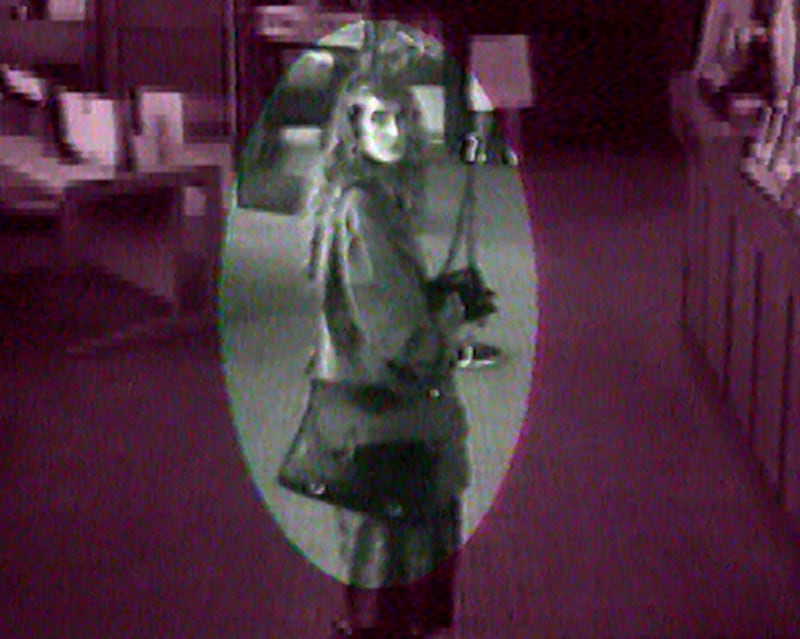On March 23rd of this year the Garda announced that Annie McCarrick’s case had been upgraded from missing to a murder inquiry. Even though three decades have passed since the American woman, then 26, was last seen, there was a collective public jolt at this development.
“Murder” is a word that carries the weight of finality, unlike the amorphous “missing”. Given the absence of a body, the decision by gardaí to upgrade a missing person case to that of murder after such a long time is unusual.
Since then, there have been some startling updates. These include a claim made in the first of a two-part RTÉ true-crime series broadcast on May 8th: Missing, Beyond the Vanishing Triangle. The documentary featured women who had vanished in Ireland throughout the 1990s, with a particular focus on McCarrick. It was claimed that friends of McCarrick, via family, alerted gardaí in 1993 to the fact she had told them she had been assaulted by a person known to her in the weeks before her disappearance. This information has never been in the public domain.
Garda sources last week told The Irish Times that two men, who were in interviewed in 1993, were now being treated as suspects.
READ MORE
McCarrick, from Long Island, New York, spent some years in the late 1980s studying teacher training in Ireland. She attended St Patrick’s College, Drumcondra, and St Patrick’s College, Maynooth. In early January 1993 she moved to Sandymount in Dublin with the intention of making her stay permanent.
Fewer than three months later, Nancy and John McCarrick’s only child had disappeared.
Annie McCarrick shared an apartment with two friends at St Cathryn’s Court on Newgrove Avenue. St Cathryn’s was then a 36-unit flat-roofed apartment block, which had been built in the 1970s. Some 17 years ago it underwent development and a glazed penthouse level was added. It is now a gated complex, painted cream, with pale grey and green features. When you step on to Newgrove Avenue, you can see the twin Pigeon house towers on the horizon.

Gardaí have said the last definitive sighting of McCarrick was at the Allied Irish Bank on the corner of Sandymount Road and Seafort Avenue, where CCTV captured her image sometime after 10.30am and before 10.50am on March 26th, 1993. It was a Friday. The building is still there, and is still operating as an Allied Irish Bank.
The Quinnsworth she visited on Sandymount Road immediately afterwards to buy groceries is now a Tesco. The time-stamp on her receipt was 11.02am. A photograph of this receipt was recently released by the gardaí. Among the items she bought at Quinnsworth that morning were sugar, Odlums flour, black plums and unspecified items listed as “fruit and veg”. The total came to £11.40.
It is no more than a five-minute walk from the former Quinnsworth to St Cathryn’s. McCarrick returned to her apartment at some point on that Friday because the grocery receipt was later discovered on her kitchen table, in the unpacked bag of shopping. As to where the young woman with the brown springy hair and vivacious character went next, nobody knows – apart from the person or people who murdered her.
For 30 years the accepted narrative went like this. She was reportedly seen by a work colleague getting on a 44 bus in Ranelagh to Enniskerry at 3.30pm-3.40pm. She was alone. Later that evening a doorman at Johnnie Fox’s pub in Glencullen, some 6km distance, reported seeing a woman he believed was McCarrick, accompanied by a man. There was no public transport between the two locations. It was assumed she had either walked to the pub while the March daylight was fading, along unlit rural roads, or was driven there by someone; possibly this man. The “sightings” ended there, although the speculation did not.
The focus of the investigation has switched from Enniskerry and Glencullen back to Sandymount. Eyewitness accounts, while well-meaning, are prone to fallibility. In the absence of CCTV images from the 44 bus, or at Johnnie Fox’s, gardaí had to rely on crucial verbal testimony from at least one person – the doorman – who had not previously encountered McCarrick. Gardaí do not now believe McCarrick travelled to Wicklow on the day she went missing or even left the Sandymount area.
[ Two men now being investigated as suspects in Annie McCarrick murder inquiryOpens in new window ]
However, the RTÉ documentary further confused the Wicklow narrative of possible “sightings” there. Una Wogan’s late mother, Margaret, had been finishing up her waitressing shift at Poppies Cafe on Enniskerry’s Square that Friday afternoon. Her daughter told RTÉ that Margaret Wogan was certain the last customers she served that day were Annie McCarrick and a “gruff” man, who was with her. It was, Una Wogan said: “At the end of her shift ... around four o’clock.” Despite the fact she volunteered this information at the time, gardaí never took a formal statement from Margaret Wogan.

Podcast: Could Annie McCarrick's disappearance finally be solved?
This may have been because the accepted timeline at that point – McCarrick “seen” boarding the Number 44 bus at 3.30pm-3.40pm in Ranelagh – did not add up. The bus journey takes an hour from there to Enniskerry, which would have placed McCarrick in Poppies at 4.30pm at the earliest.
John McCarrick died in 2009. Nancy McCarrick is still alive and contributed to the RTÉ documentary. In a steady voice she described her daughter as “reliable” and “conscientious”, and that her daughter “wasn’t fearful”. The fearfulness, as we now know, was to instead dominate the lives of Nancy and the late John McCarrick.
The Garda investigation is continuing.
The second and final part of Missing, Beyond the Vanishing Triangle, airs on Monday on RTÉ 1














